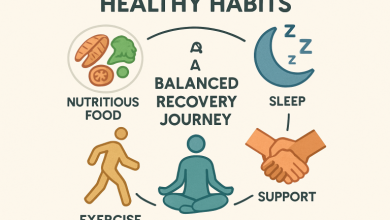Practical Strategies for Seniors to Maintain Independence at Home

Assessing and Modifying the Home Environment
Home modifications should reflect the senior resident’s needs and activities. Small adjustments like securing carpeting, removing clutter and cords, or repositioning furniture can provide reassurance. When needed, investing in adaptive devices such as stairlifts, walk-in tubs, or zero-entry showers helps seniors with mobility challenges. Consulting occupational therapists or aging-in-place specialists is valuable for assessing risk and recommending personalized changes.
Many older adults find staying in a familiar home comforting and psychologically reassuring, filled with memories and routines. To maintain independence, they should make simple yet impactful modifications like installing handrails, adding grab bars, improving lighting, and keeping essentials within reach. These steps help reduce fall risks and preserve safety and accessibility. If you’re interested in exploring additional strategies and accessing expert guidance tailored to specific home environments, read more about specialized senior care services that specialize in fostering sustainable independence through practical solutions.
Embracing Assistive Technologies
Technological innovation has transformed independent living for seniors. Modern emergency response systems provide reliable help via push buttons, while wireless sensors discreetly detect falls and alert caregivers instantly. Smart home devices like voice assistants, automated lighting, and thermostats simplify daily tasks. Tablets and smartphones assist with medication reminders, scheduling, and telehealth. These technologies promote senior autonomy and give families peace of mind, knowing help is readily available.
Maintaining Physical Health
Home independence hinges on maintaining physical health. For seniors, staying active is about more than exercise—it’s about keeping the body capable of daily tasks. Regular movement helps preserve balance, flexibility, endurance, and strength, reducing injury risk and supporting self-sufficiency. Activities like walks, stretching, chair yoga, or water aerobics can be adapted to different fitness levels. A balanced, nutrient-rich diet is also vital for heart, brain, and immune health. Regular consultation with healthcare professionals helps seniors develop personalized nutrition and fitness plans, ensuring a high quality of life.
Fostering Social Connections
Aging at home risks social isolation, affecting mental and physical health. Staying connected with friends, family, and community boosts satisfaction, reduces loneliness, and enhances cognition. Seniors should join group activities like fitness, art, church, or volunteering to foster meaningful interaction and purpose. For those with mobility issues, technology offers video calls, discussion groups, and interactive games, helping seniors maintain emotional links that support their mental health and well-being.
Planning for Future Needs
Proactive planning is essential for aging in place confidently. Discussing future needs—covering care, finances, and legal documents—helps set expectations and reduce uncertainty. Seniors should consider how health changes impact their abilities and communicate their wishes to family or caregivers. Organizing key documents like medical directives and power of attorney in advance allows loved ones to act according to wishes if circumstances change. Exploring financial strategies early, including costs for renovations, assistive devices, or in-home care, is vital. Researching community support services beforehand makes transitions less stressful and preserves independence longer.
Utilizing Community Resources
Communities nationwide are increasingly recognizing the needs of an aging population, offering vital resources that support home independence. These include nutritious meal deliveries, transportation, home repairs, and flexible in-home health services from local agencies, helping seniors stay safely and comfortably at home. Senior centers act as social hubs with workshops, health screenings, and exercise classes for older adults. By engaging with these resources, seniors can overcome daily challenges, expand social circles, and maintain independence with confidence and dignity.
Staying Informed and Educated
Ongoing education is vital for empowered aging. Knowing about the aging process, healthcare advances, and community resources helps seniors make informed decisions. Attending workshops, seminars, reading reputable publications, and using free online resources on health, loss, or legal planning keep seniors current. Staying informed fosters adaptability and resilience as needs change. Seniors and caregivers seeking advice on maintaining independence will find useful guidance.
Conclusion
Maintaining independence at home as we age does not have to be daunting. With thoughtful planning, simple modifications, access to reliable technology, and a commitment to healthy living and engagement, seniors can continue to thrive within the comfort of their own homes. Proactive use of community resources and ongoing education ensures both safety and fulfillment, helping older adults confidently create and live out their own unique vision of aging in place.





